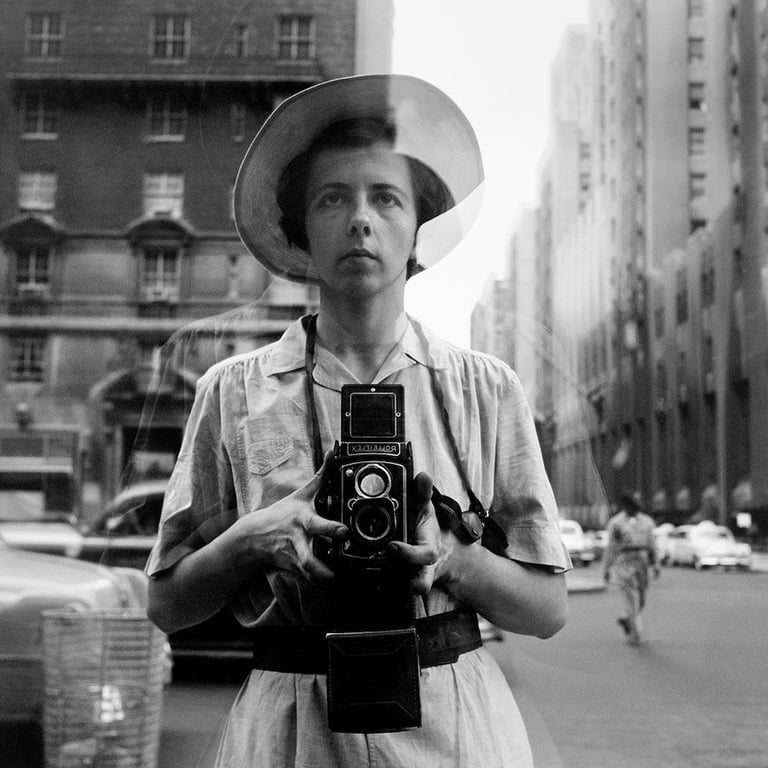Autofocus on Failure
The Paradox of Plenty in Street Photography
PHOTOGRAPHY PERSPECTIVES
In the age of digital miracles, where cameras can juggle ISOs, wrestle with exposures, and even babysit our focus, one might expect the art of photography, particularly street photography, to have ascended to new, unprecedented heights. After all, with such technological babysitters, it should be virtually impossible to capture a poor photograph, right? Wrong! As a seasoned street photographer, I've watched this narrative unfold with a mix of bemusement and mild exasperation.
Back in the day, armed with nothing but our trusty mechanical steeds and a roll of 120 film, we ventured into the urban wilderness. The rule of thumb was stark yet simple: out of twelve shots, be grateful for one or two keepers. Every frame was a calculated risk, a marriage of instinct and technique. We were the tightrope walkers of the photographic world, where every snap of the shutter was a potential fall into the abyss of overexposure or the dark pit of underdeveloped dreams.


Fast forward to today, and the landscape is unrecognisable. Cameras now come equipped with a bewildering array of assists: autofocus that locks on faster than a seagull on chips, image stabilisation that could keep a martini smooth in an earthquake, and exposure control that might as well have graduated from Hogwarts. Yet, paradoxically, the ratio of remarkable shots hasn't seen the meteoric rise one might expect. If anything, it feels as though we're wading through more mediocrity than ever before.
Why, you might ask, with a hint of desperation, does this paradox exist? Well, let's unwrap this enigma, shall we?
Firstly, let's talk about the overreliance on technology. In the golden age of manual focus and exposure, photographers had to engage with their environment intimately. Every adjustment on the camera required a corresponding dance with the subject and the light. It was a holistic tango of awareness, leading to deeply considered and often more meaningful photographs. In contrast, the digital age has introduced a buffet of shortcuts, where the camera often does the thinking for the photographer. This can lead to a disconnection from the creative process, where the photographer becomes a passive observer rather than an active participant.
Then there's the issue of quantity over quality. Digital memory is vast and cheap, encouraging a machine-gun approach to photography: shoot first, ask questions later. But as any old-school photographer will tell you, this scattergun strategy rarely pays off. Photography, especially street photography, is about capturing moments, not just images. It requires patience, timing, and a sprinkle of serendipity. In the rush to capture everything, we risk capturing nothing of value.
Let's not forget the intimidation factor of modern editing software. Back in our day, the darkroom was a place of alchemical wonder, where images were coaxed into life with a gentle hand and a discerning eye. Today, editing software offers infinite possibilities, which, paradoxically, can stifle creativity. The pressure to create a 'perfect' image can lead photographers down a rabbit hole of tweaking and tampering, losing the soul of the photograph in the process.
And here's a humorous twist: in our quest for the sharpest, most stabilised, perfectly exposed photographs, we've forgotten one simple truth – it's the imperfections that often make a photo memorable. The missed focus on a subject's eyes, leaving them mysteriously blurred, the grain that adds character to a nocturnal scene, the accidental light leak that gives an image an ethereal glow. These were the happy accidents that we cherished in the analogue world, the serendipitous strokes of luck that breathed life into our work.
In conclusion, while modern technology has undoubtedly opened new avenues for creativity and exploration, it has also erected new barriers. The true essence of street photography, the raw, unfiltered capture of the human condition, often lies in the imperfections, the unplanned moments, and the personal engagement with the subject and environment. Perhaps, in our quest for photographic perfection, we've lost sight of what truly matters. Maybe it's time to embrace a bit of the old-school ethos: slow down, observe, engage, and remember that the best camera is the one that's with you, coupled with a discerning eye and a human touch.
So, dear fellow street photographers, let us not be seduced into complacency by the siren songs of our all-singing, all-dancing digital devices. Instead, let's remember the value of intention, the power of patience, and the irreplaceable thrill of capturing that one, perfect, imperfect moment.
© Peter Pickering 2024. www.peterpickering.com




